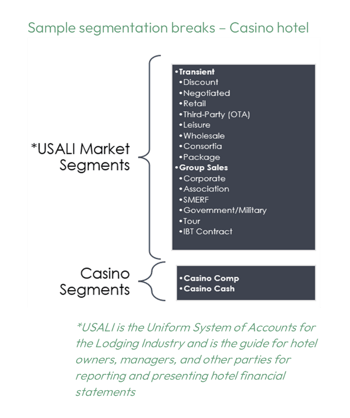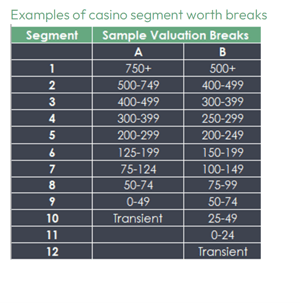Here in SHR Group our Digital Marketing team are always on the lookout for and testing new and innovative tech and marketing platforms to see how they could; be adopted for our Hotel clients.
Below is a snapshot of what the team have been keeping an eye and deploying for clients recently and what is keeping is busy in the coming months ahead. These new trends demonstrate the ever-evolving nature of digital marketing and the need for hotel marketers to stay on top of the latest trends to succeed in a competitive landscape.
Performance Max and New Campaign types changing digital marketing
This year digital marketers will experiment with new campaign types to reach their target audience in more innovative and engaging ways. One campaign type of particular relevance for Hotel Marketers is Performance Max for Travel Goals or Travel Max. This goal-based, multi-channel campaign has been designed to drive more targeted intent traffic for Hotels. Powered by Google’s AI campaign type, Performance Max, Travel Max helps hotel’s easily expand reach and drive more conversions across the entire Google ecosystem.
This new campaign type creates ads in multiple formats that will automatically serve across Google channels and inventory, including Google Maps, Search, YouTube and Hotel Ads (coming later in 2023).
The difference being that Performance Max for Travel Goals is a goal-based, audience-oriented campaign, instead of the keyword or network-targeted approach of previous campaign types.
Advertisers who use Performance Max achieve on average over 18% more conversions at a similar cost per action. (Google Support Article, 2023)
The degradation of demographics in digital marketing
Demographics have always vital component of any marketing strategy as they allow businesses to target specific groups of people based on their age, gender, income, education, and other characteristics. However, with the rise of ad blockers, privacy regulations, and the increasing use of mobile devices, it has become increasingly difficult to accurately capture demographic data and early signs show that only a small portion of your traffic being recorded in Google Analytics 4 will have age, gender and interests‘ data.
In just 1 example we have looked at GA4 data going back as far as July 1st 2022 (the cut-off date for year over data capture) and “Unknown” accounts for over 90% of the users when looking at the age demographics.
As a result, hotels may resort to using inaccurate or incomplete data sets to target their advertising if they stay focused on these demographic sets. The impact of which will be wasted resources and ineffective campaigns.
To combat this issue, hotels must prioritize transparency and ethical data collection practices, using only verified data sources and allowing consumers to control their data privacy settings. Additionally, new technologies such as artificial intelligence and machine learning can help Hotels more accurately reach potential guests. Overall, the degradation of demographics in digital marketing highlights the need for responsible data usage and ethical marketing practices.
The Impact of Measurement Changing with GA4
Google Analytics 4 (GA4) is the latest version of the popular web analytics tool from Google, and it comes with significant changes that impact how we measure website performance. One of the most significant changes is the shift from session-based measurement to event-based measurement. This means that instead of tracking pageviews and sessions, GA4 tracks individual user interactions, such as clicks, video views, and form submissions. This change in measurement allows for a more comprehensive understanding of user behavior, allowing hotel marketers to tailor their digital experiences to their audiences better.
Additionally, GA4 also includes more advanced machine learning capabilities, allowing for predictive insights and analysis, making it a more robust tool for data-driven decision-making. Overall, the impact of measurement changing with Google Analytics 4 is that it provides hotel’s with a more accurate and detailed understanding of their online audiences and empowers them to create more effective digital experiences.
Impact of Social Media platforms in digital marketing and how that is impacting revenue attribution
As businesses increasingly invest in social media ads, it has become challenging to accurately attribute revenue to specific marketing efforts. Paid social media ads can influence customer behavior across multiple touchpoints in the customer journey, making it difficult to identify the most influential touchpoints.
Furthermore, many businesses use multi-channel marketing strategies that involve multiple digital channels, which further complicates revenue attribution. To address these challenges, businesses are adopting more advanced attribution models that take into account the impact of paid social media advertising on the entire customer journey. For example, someone might search the brand name and click through a Google search ad, find the room but leave the site to go talk to their partner about the trip before making the booking.
After speaking with their partner, they search the brand name again but this time they come through to the site from a metasearch listing. Before they searched on Google, they may have also seen an ad on Facebook for the brand which inspired them to search for the property in the first place. In a situation like this, Facebook Google Search and Metasearch would all claim to have generated some of that revenue, so this is where the increasing use of social advertising impacts the revenue distribution.
As more and social platforms win market share, they will inevitably become part of the marketing mix for Hotels and they will start claiming revenue wins as their own through their own attribution models. In some cases, we are already seeing Paid attribution across multiple channels is summing to above what was delivered in the period measured.
Increasing Cost per Clicks – OTAs back in the auction
Competition for ad space on search engines and social media platforms increases the demand and therefore the price of clicks on paid search. Additionally, changes to search engine algorithms and advertising policies have made it more difficult for advertisers to achieve prominent ad placements without increasing their CPC.
In recent years, the cost-per-click (CPC) for hotel pay-per-click (PPC) campaigns has been on the rise. There are several factors contributing to this trend. Firstly, the competition among hotels and online travel agents (OTAs) such as Booking.com and Expedia has risen, in 2022 this was seen across all our clients who are still using OTAs, with the end of the pandemic the OTAs began spending on marketing campaigns again and the hidden cost of the OTAs was realized with typically a 50% in increase in the avg. CPC for the brand campaigns alone.
Finally, the growing popularity of mobile devices has led to an increase in mobile advertising, which typically has a higher CPC than desktop advertising. All of these factors combined have made it more challenging for independent hotels going it alone to achieve a profitable ROI in this increasingly crowded and expensive advertising landscape.
In SHR group we have over 20s year experience working across the digital marketing landscape and typically see ROIs of over 20 to 1 across all channels, we work with.
Learn how Cheval Collection increased Revenue by 82% through using SHR Group’s digital expertise.



